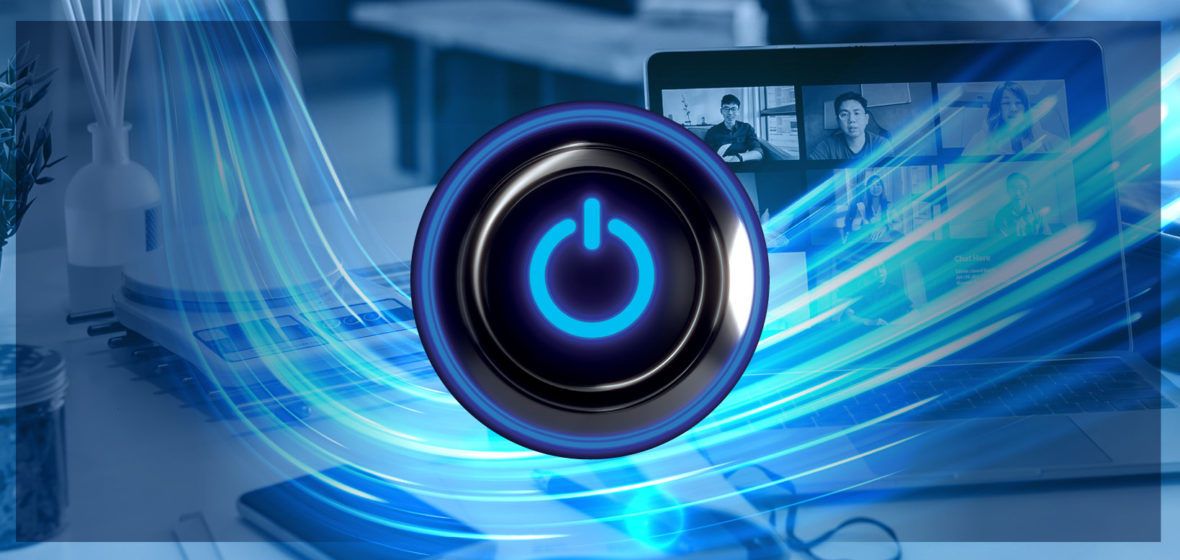Perhaps we need a nuanced approach to the use of technology. It may be that in some commercial cases and other essentially documentary cases it will be more acceptable. Or in the hearing of appeals.
Virtual measures, introduced almost overnight, kept court running during the pandemic’s darkest days. Should they remain in place?
For every practical adjustment – NSW District Court Judge Robyn Tupman recalled an industrious corrections officer using a post-it note to cover the audio-visual link [AVL] screen during a criminal trial where the complainant was not supposed to be allowed to see him as a “low tech solution to a high tech problem” – there is a more abstract question. Namely, what does the more closed-doors model for online court say about access to justice and open proceedings? How can safety and transparency work in tandem? The Law Society’s post-COVID report summarised it as:
“Just under a quarter of members believed there to have been a negative impact overall on the integrity of the justice system arising from COVID-related changes. Strongest concern was revealed about a negative impact on public access to viewing of court hearings, participation of clients or witnesses in court and litigant access to support services. On the other side of the equation, some saw the potential for remote processes to increase accessibility and access to justice, and to protect vulnerable parties. On balance, the integrity of the justice system was seen to have been positively impacted.”
So, how does the principle of open justice fit into a system where so much happens online, accessible only by links available to parties in a proceeding, or inside courts strictly following social distancing rules and banning members of the public, and sometimes members of the media, from entering? Clearly there are efficiency benefits with remote hearings, but the need for human impact inside the system must not be diluted.
Court work is also an opportunity where valuable relationship building can make all the difference, no matter what side of the table. “Criminal lawyers are a very social crowd,” Tiedt says. “What I have missed the most about the last two and a half years is being down at court, catching up with colleagues outside the courtroom, and building relationships with other lawyers.”
 Chief Justice of the NSW Supreme Court Andrew Bell
Chief Justice of the NSW Supreme Court Andrew Bell
The new Chief Justice of the NSW Supreme Court Andrew Bell told the Australian Bar Association Conference in May: “The notion that we will be going to remote hearings as a default, other than in exceptional circumstances – at least until my watch is over – is not going to happen”.
“That’s not because I’m a technophobe – I’m not. I just think, fundamentally, it’s wrong and corrosive of the proper administration of justice. If you describe someone as having a remote personality, they are difficult to know. If a place is remote, it’s often inaccessible and difficult to access. Sometimes the law is regarded as remote; it’s remote to non-lawyers in its complexity, its mystery and its ceremony. So, why on earth should we be pushing something which makes the law even more remote? Perhaps we need a nuanced approach to the use of technology. It may be that in some commercial cases and other essentially documentary cases it will be more acceptable. Or in the hearing of appeals.”
When asked about a seeming divide between the judiciary and frontline practitioners, Criminal Law specialist Andrew Tiedt says there is common ground to be found. “I completely sympathise with those members of the judiciary pushing for a complete return to face-to-face work,” he says. “Appearances over AVL are frequently beset by technical difficulties. Email appearances only work if practitioners are thorough, organised, and across both the brief and the practice notes. Advocates appearing over email cannot be quizzed about the subtleties of a matter. “Having said that, my experience is that there is a balance that can be struck. We all know that lawyers generally are famously averse to change. Whilst AVL appearances cannot and should not entirely replace all in-person appearances, I hope that as we emerge from COVID lockdown we will be able to retain those changes that have improved efficiency and reduced cost for litigants.”
The maintaining of virtual court for certain types of matters was broadly supported in the Law Society survey, which said in its conclusions: “While virtual courts are perceived to have strengths, the importance of allowing for some court processes to take place in person is widely acknowledged.” For those surveyed in litigation, 69 per cent agreed there should always be an opportunity for court processes to take place in person. “Remote court is considered best suited to appearances of a procedural nature, with concern expressed about hearings involving unrepresented parties, defended hearings, cross-examinations, witnesses, complex evidence, and juries,” the report said. “Virtual court was also seen to remove the incidental opportunity to settle prior to the start of hearings.”
Tiedt points to the time saved by no longer having to travel hours to do brief “entirely uncontroversial” mentions in local courts as a positive step for the courts. “The best examples of the ‘virtual court’ working well is in high-volume, low-complexity appearances. Two examples spring to mind,” he tells the Journal.

“Many large volume District Court lists are dominated by people setting trial dates, setting sentence dates, seeking case management orders, varying bail, and otherwise dealing with procedural orders. The notorious ‘Friday Arraignment List’ in the Downing Centre usually has up to or even more than 100 matters listed, in a courtroom that holds (at best) 40 people.
“Previously, this required queuing for an hour to even get into the courtroom to mention your matter, and then pushing through the crowd to have your matter mentioned. Clients were paying for up to several hours of waiting for a two-minute appearance. Now, the list is almost exclusively by AVL. Matters are allocated a ‘slot’ and the advocates dial in at the appointed time. The list is run with ruthless efficiency, with almost all advocates appearing from their office or chambers.
“The second example is procedural Local Court appearances. Many, if not most, Local Court appearances are entirely uncontroversial. These appearances are easily, and vastly more conveniently, handled by an email to the court from the solicitor or counsel for the defendant. This is a huge time saving for the advocate, and a huge cost saving to the client.”
Tiedt echoes the findings of the survey – and the thoughts of some at the Law Society’s Leaders in Law Roundtable – that there are “circumstances where it has not worked well”.
“Any matter where evidence is called is not conducive to being conducted over AVL,” Tiedt says. “Trials over AVL have been a necessary evil, but it does not work well. Documents cannot be shown to the witness. Witnesses cannot mark documents. Technical difficulties constantly interrupt proceedings. The subtleties of expression, tone, manner and timing are all lost. Technical problems and transmission delay make it almost impossible to cross examine effectively. There is no doubt that, where there is no other option, matters conducted over AVL have been better than nothing. The wheels of justice have to continue to turn. There are still circumstances where AVL appearances should be allowed – a good example is an expert witness who is overseas.
“But there is also no doubt that where a crucial witness is giving evidence, it is better that they be in the same room as the advocate and the finder of fact.”
Law Society President van der Plaat is advocating for greater court resources as one of the priorities of her term; she says this includes adequate video conference resourcing for all jurisdictions in NSW.




